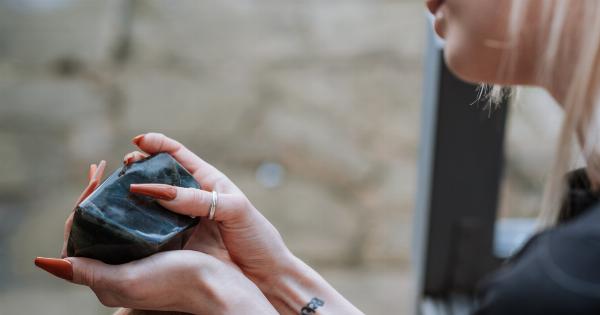Black henna tattoos have gained popularity in recent years as a temporary body art option. However, what many people don’t realize is that these tattoos can pose serious health risks.
While traditional henna tattoos are made from natural ingredients, black henna contains a chemical called para-phenylenediamine (PPD), which can cause severe allergic reactions and other adverse effects. In this article, we will explore the hazardous side of black henna tattoos and shed light on what you need to know before getting one.
1. The Origins of Black Henna
Black henna is not the same as natural henna. Natural henna, commonly used in traditional henna tattoos, comes from the Lawsonia inermis plant, which is native to North Africa, South Asia, and the Middle East.
The leaves of this plant are dried, crushed, and mixed with a liquid to form a paste, which is then applied to the skin. This type of henna is safe and typically produces a reddish-brown stain that fades away naturally over time.
On the other hand, black henna is a synthetic substance that is often added to natural henna to achieve a darker color. PPD, the chemical responsible for the black color, is not approved for use on the skin by regulatory bodies such as the U.S.
Food and Drug Administration (FDA) and the European Union. Despite this, black henna is still used by some amateur tattoo artists and is readily available in various markets.
2. Risks Associated with Black Henna Tattoos
Black henna tattoos may seem like a convenient and trendy option, but they can have serious consequences. Here are some of the risks associated with black henna tattoos:.
2.1 Allergic Reactions
One of the most significant dangers of black henna tattoos is the risk of severe allergic reactions. PPD is a powerful allergen that can cause contact dermatitis and other allergic symptoms.
Common signs of an allergic reaction include itching, redness, swelling, blistering, and even skin burns. In some cases, individuals may experience anaphylactic shock, a severe and potentially life-threatening reaction.
It’s crucial to note that even if you’ve had a henna tattoo before without any issues, you’re not immune to allergic reactions from black henna.
2.2 Chemical Burns
PPD contained in black henna can cause chemical burns when applied to the skin. The burns may vary in severity depending on the concentration of PPD and the duration of contact with the skin.
Chemical burns can be extremely painful and may lead to long-lasting scars or hyperpigmentation.
2.3 Sensitization
Repeated exposure to PPD in black henna tattoos can sensitize the skin. Sensitization means that your immune system recognizes PPD as a harmful substance, leading to an allergic response every time you come into contact with it.
This hypersensitivity can extend beyond black henna and cause reactions to other products containing PPD, such as hair dyes.
3. How to Recognize Black Henna
It can be challenging to distinguish between natural henna and black henna, as they often look similar when applied. However, there are some signs that can help you identify black henna:.
3.1 Color
Black henna has an unmistakably dark black or blue-black color, giving it a sharper contrast against the skin compared to natural henna, which usually has a reddish-brown color. The intense color of black henna is achieved by the addition of PPD.
3.2 Quick Drying
Black henna typically dries much faster than natural henna. While natural henna paste needs to remain on the skin for several hours to achieve a lasting stain, black henna often dries within 30 minutes to an hour.
3.3 Lack of Natural Aroma
Natural henna has a distinct earthy, herbal scent due to the presence of essential oils in the plant. In contrast, black henna does not exhibit this natural aroma, as it is a synthetic substance.
4. Safe Alternatives to Black Henna
If you want to get a temporary tattoo without the associated risks of black henna, there are several safe alternatives available:.
4.1 Natural Henna
Stick to traditional natural henna tattoos to ensure your safety. Natural henna, derived from the Lawsonia inermis plant, poses minimal risks and usually results in a beautiful reddish-brown stain.
4.2 Jagua Tattoos
Jagua tattoos have gained popularity as a safer alternative to black henna tattoos. The dye used in jagua tattoos is derived from the unripe fruit of the Genipa americana tree.
The resulting blue-black stain closely resembles the look of black henna but without the harmful effects of PPD.
4.3 Temporary Transfer Tattoos
Temporary transfer tattoos, often referred to as “flash tattoos,” are another safe option. These tattoos are created using non-toxic ink and adhere to the skin with the help of water.
They can be easily removed and do not pose any long-term risks.
5. Conclusion
Black henna tattoos may seem like a fun and convenient way to adorn your skin temporarily. However, the risks associated with black henna, including severe allergic reactions, chemical burns, and sensitization, should not be taken lightly.
It is crucial to be aware of the dangers and opt for safe alternatives, such as natural henna, jagua tattoos, or temporary transfer tattoos. Your health and well-being should always take precedence over temporary body art.






























